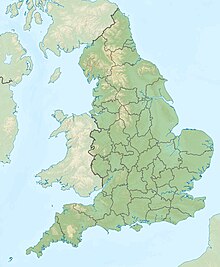Bletchley Park

The Mansion in 2017
|
|
|
Location in England
|
|
| Established | 1938 (as a code-breaking centre); 1993 (as a museum) |
|---|---|
| Location | Bletchley, Milton Keynes, Buckinghamshire, England, United Kingdom |
| Coordinates | 51°59′47″N 0°44′34″W / 51.9965°N 0.7428°WCoordinates: 51°59′47″N 0°44′34″W / 51.9965°N 0.7428°W |
| Director | Iain Standen |
| Public transit access | Bletchley railway station |
| Website | www |
Bletchley Park was the central site for British codebreakers during World War II. Run by the Government Code and Cypher School (GC&CS), it regularly penetrated the secret communications of the Axis Powers – most importantly the German Enigma and Lorenz ciphers. The official historian of World War II British Intelligence has written that the "Ultra" intelligence produced at Bletchley shortened the war by two to four years, and that without it the outcome of the war would have been uncertain.
Located in Milton Keynes, Buckinghamshire, England UK, Bletchley Park is now a flourishing heritage attraction, receiving hundreds of thousands of visitors annually. Open seven days a week, it is popular with individuals and families, as well as school groups and tour parties.
Bletchley Park is opposite Bletchley railway station. It is close to junctions 13 and 14 of the M1. Located 50 miles (80 km) northwest of London, the site appears in the Domesday Book as part of the Manor of Eaton. Browne Willis built a mansion there in 1711, but after Thomas Harrison purchased the property in 1793 this was pulled down. It was first known as Bletchley Park after its purchase by Samuel Lipscomb Seckham in 1877. The estate of 581 acres (235 ha) was bought in 1883 by Sir Herbert Samuel Leon, who expanded the then-existing farmhouse into the present "maudlin and monstrous pile" combining Victorian Gothic, Tudor, and Dutch Baroque styles.
...
Wikipedia

